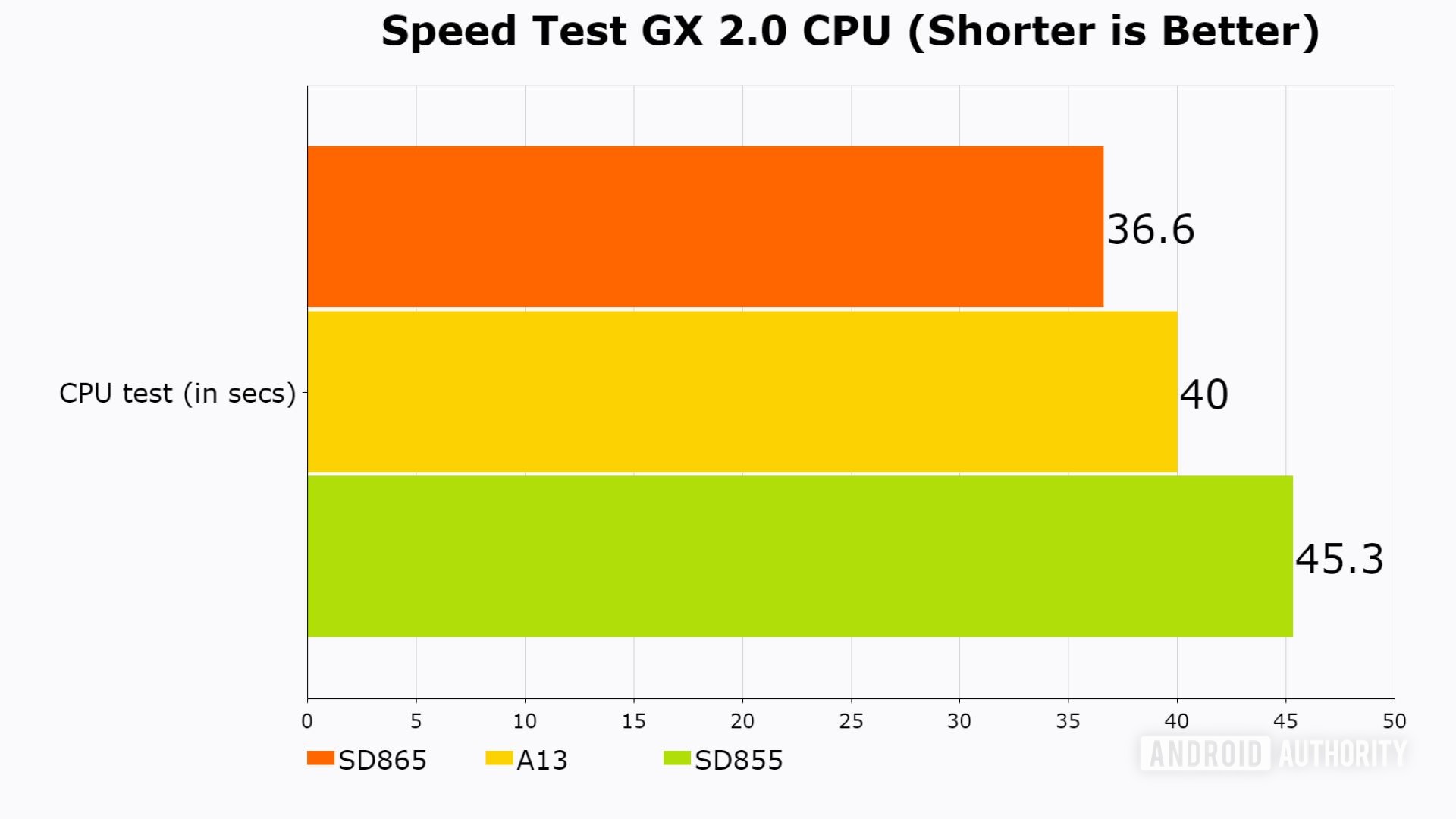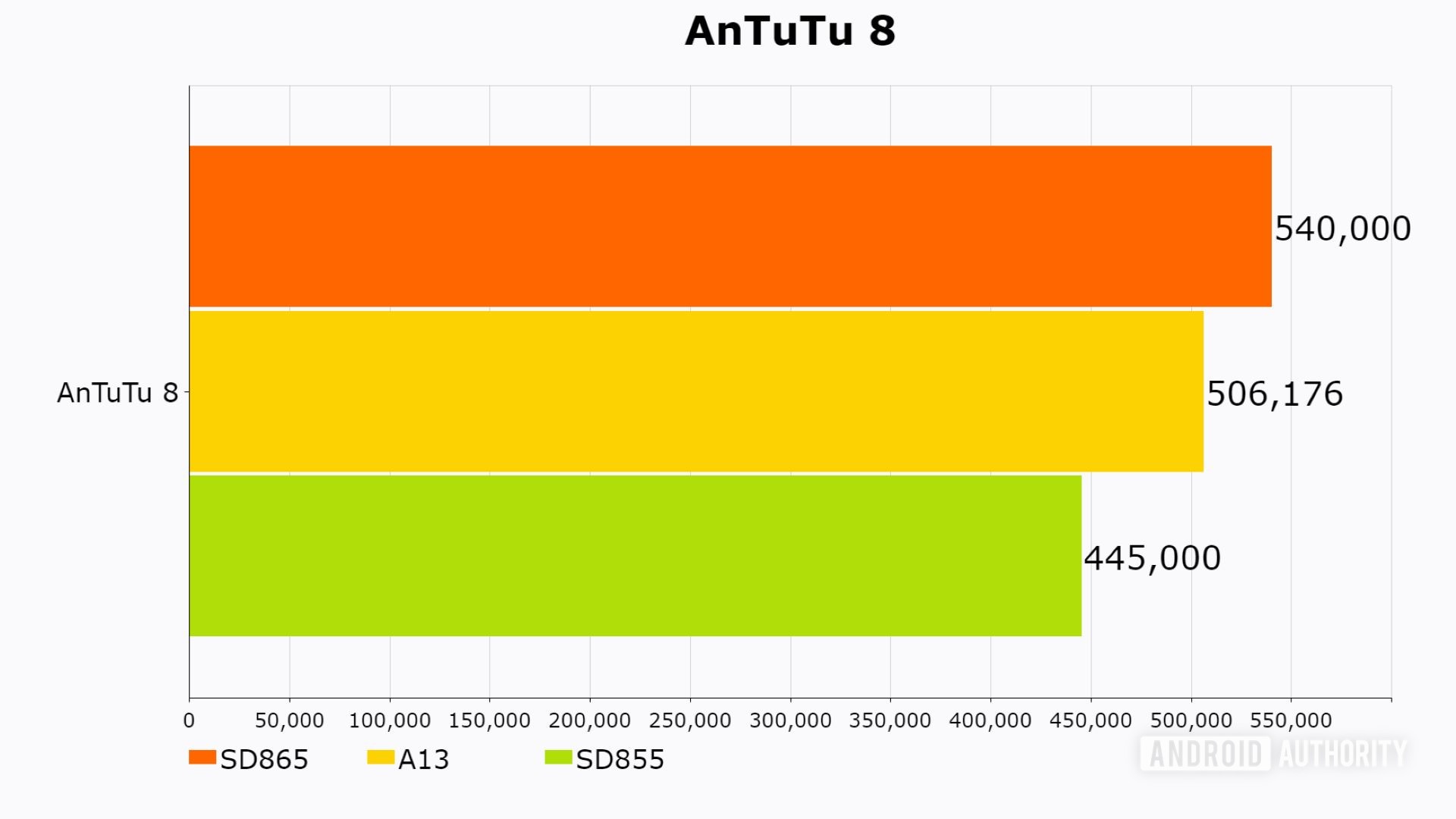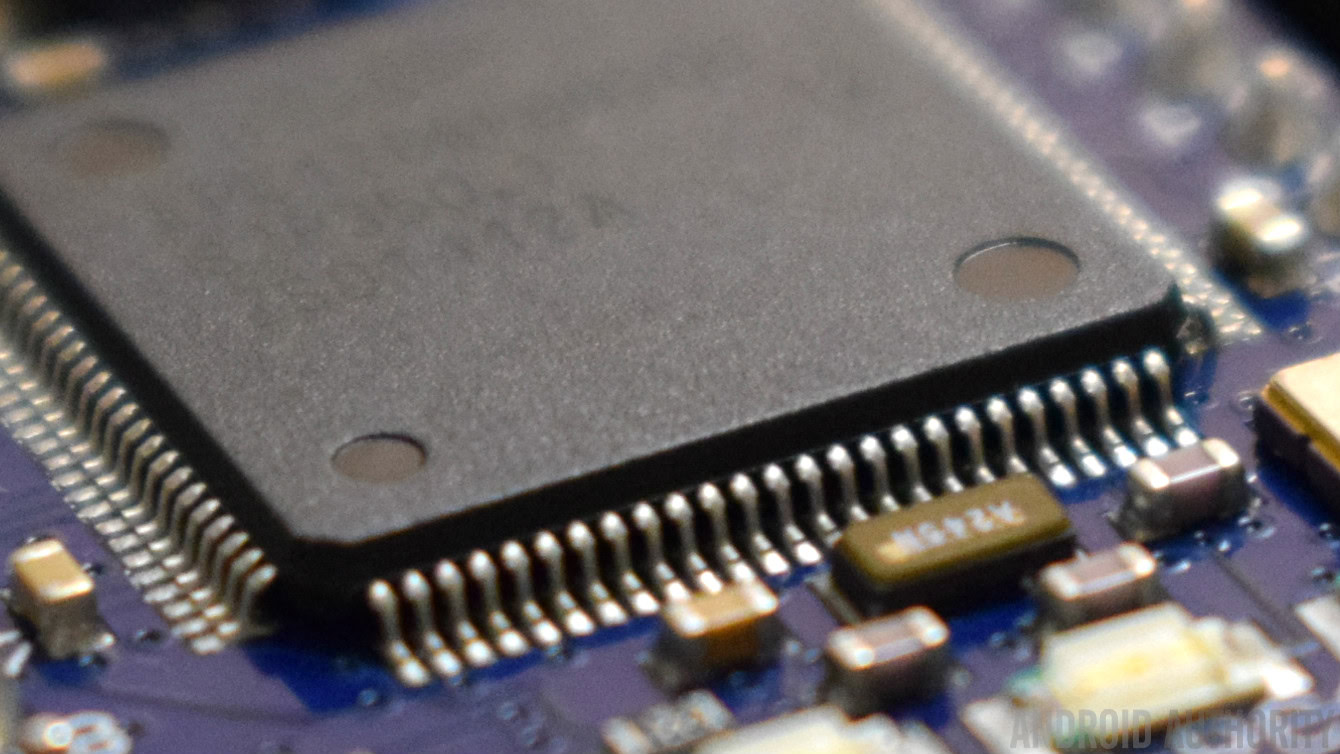Affiliate links on Android Authority may earn us a commission. Learn more.
Finally! Snapdragon 865's CPU beats the Apple A13
December 16, 2019
It is often said that Apple’s processors are at least two generations ahead of the processors available for Android. Samsung, HUAWEI, and MediaTek all make powerful processors for Android devices including the Samsung Exynos 990 and the MediaTek Dimensity 1000 5G. However Apple’s closest rival, in terms of performance, has often been Qualcomm with its Snapdragon range.
Using my own test suite, Speed Test G, last year’s Snapdragon 855 has a similar performance to the Apple A11 processor found in the iPhone 8. But compared to the Apple A13 processor in the iPhone 11 range, the Snapdragon 855 is about 25% slower.
But that is all about to change. Two things happened this year that are vitally important. First, the performance increase from the Apple A12 to A13, according to Speed Test G, was less than 5%. Second, the Snapdragon 865 has managed to deliver a real-world 20% speed boost. This stumble by Apple and the leap by Qualcomm means that now these two processors are starting to compete in the same class.
Related: Qualcomm Snapdragon 865 vs MediaTek Dimensity 1000 specs: A rivalry renewed
Qualcomm launched the Snapdragon 865 in early December 2019, and soon after its launch, it allowed some of the publications to test out the 865’s performance using a Qualcomm Reference Device (QRD). The QRD is basically a prototype smartphone that Qualcomm builds for testing. It is bland in terms of aesthetics, but inside it contains a typical Snapdragon 865 setup including the 5G modem, RAM, internal storage, etc.
While others were busy running AnTuTu and Geekbench on the Snapdragon 865 reference device, we set about running Speed Test GX 2.0. If you aren’t familiar with Speed Test G, it is a test suite, which I (Gary Sims) have written using the best parts of a “traditional” speed test (opening apps one after the other to see which device can complete the sequence first) along with the benefits of a “traditional” benchmark (CPU testing, GPU testing, etc). I built it due to my frustration with flaws found in traditional speed tests and consumers’ lack of trust for benchmarks. If you want more information, then please check out the FAQ and watch the explanatory/introductory video here.
The full Speed Test GX 2.0 test run is embedded below. If you want to have the satisfaction of watching the video and seeing the result, then stop reading and watch the video now, because I am about to reveal how the CPU performed. So, spoiler alert!
Qualcomm Reference Device (Snapdragon 865) vs iPhone 11 Pro Max (Apple A13) — Speed Test GX 2.0
For context, the Snapdragon 855-based Galaxy Note 10 Plus completed the CPU section of the test in 45.3 seconds, while the iPhone 11 Pro Max finished it in 40.0. So the Note 10 Plus was at least five seconds behind the iPhone. But the Snapdragon 865 did much better. In fact, it beats the iPhone 11. The 865 completes the same test in 36.6 seconds. That is 20% faster than the Snapdragon 855, and 8% better than the iPhone 11.

While Android Authority’s own C. Scott Brown is calling on all Android and Apple fans to permanently end the hate (something with which I completely concur), the boost in the Snapdragon’s performance is to be celebrated as the playing field is now more level than ever.
In terms of GPU, the Apple A13 still has the upper hand. The iPhone 11 Pro Max finished the 3D Unity test in 14.5 seconds, while the Qualcomm Reference Device took 16.9 seconds. However, screen resolution is a factor. The reference device has a screen resolution of 1440 x 2880 (which is 4.1MP), whereas the iPhone uses 1242 x 2688 (which is 3.3MP). So the reference device is pushing more pixels around, meaning it is working harder.
Qualcomm Reference Device (Snapdragon 865) vs iPhone 11 Pro Max (Apple A13) — Traditional benchmarks
For those of you that like traditional benchmarks like AnTuTu and Geekbench, here are the kind of numbers that the Snapdragon 865 Qualcomm Reference Device can deliver. For Geekbench 5 single-core the QRD yields a score of around 935, compared to around 1330 for the iPhone 11. This means that a single core, on its own, of the A13 still offers better performance than a single core in the Snapdragon 865. But when you use all of the CPU performance available, then the Snapdragon 865 scores 3,450 for Geekbench 5 multi-core, compared to 3,480 of the iPhone 11. Meaning that, while Geekbench doesn’t say that the Snapdragon 865 can beat the A13, it clearly shows that they are now neck-and-neck.

However, AnTuTu 8 gives a different result. The QRD scores around 545,000, whereas my result from an iPhone 11 Pro Max I have here is around 506,100. I have seen higher AnTuTu scores quoted online and the official AnTuTu rankings state that the iPhone 11 Pro Max should score 549,717, making the results much closer.

This means that the two processors are fighting it out on level ground and while one thrusts, the other parries and then launches a counter. The caveat is that AnTuTu and Geekbench scores tend to have a wide margin of error. Also, note that these are the numbers for AnTuTu 8 and Geekbench 5. They can not be compared to results from AnTuTu 7 and Geekbench 4, which were the popular versions at the time that many Snapdragon 855 devices were launched.
What will be interesting is to see what the smartphone makers like Samsung, LG, OnePlus, and Sony can do with the Snapdragon 865. Historically the QRD has tended to be a bit slower than the devices that finally reach the market. Also, we shouldn’t forget what companies like Xiaomi, OPPO, Lenovo, and ASUS could do with the Snapdragon 865, as each of those had competitive SD855-based devices of their own.
What does it mean for you (and me)?
For those of you that want the best performance, then clearly the Snapdragon 865 is going to be a must-have. But, if like me, you tend to keep your smartphone for two (or more years) then the question is, should you upgrade from the Snapdragon 855?
I have a Snapdragon 855 device and I am enjoying its performance and battery life. My previous device was the Exynos version of the Samsung Galaxy Note 8 and the bump in performance is noticeable. Will I break my rule and upgrade within a year? Having seen these initial results, I must say that I am tempted. It will, of course, depend on what 2020’s devices look like. But I am thinking maybe the Pixel 5 will finally be the perfect phone — a well-blended mix of performance, battery life (as long as we don’t get another Pixel 4!), and computational photography. We will see!
Thank you for being part of our community. Read our Comment Policy before posting.